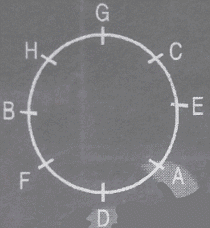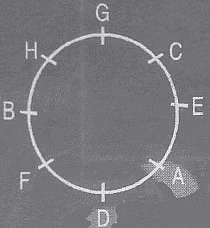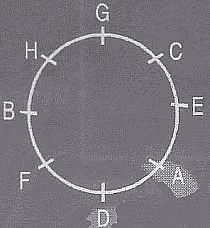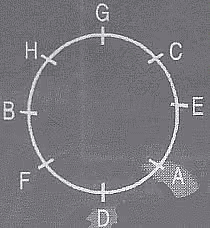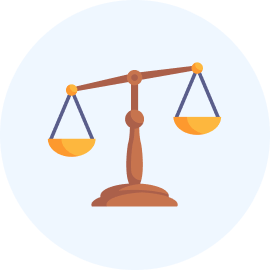Practice Questions: Seating Arrangement- 1 | Logical Reasoning for CLAT PDF Download
Direction for Question (1 to 5) - Eight persons – L, M, N, P, Q, R, S and T – are sitting at a square table such that there are two on each side and they are all facing the centre.
- P is sitting between L and S.
- Q is sitting two place to the left of L.
- R and T are sitting along one side of the square table.
- R is sitting opposite to L.
- M is sitting two place to the left of R.
Q1: Who is sitting opposite to P?
(a) S
(b) M
(c) N
(d) T
Ans: (d)
As we can draw the figure from the given data in the question accordingly and answer the following questions.In the figure we can see that T is sitting opposite to P
Q2: Who is sitting two places to the right of S?
(a) P
(b) M
(c) T
(d) L
Ans: (c)
As we can draw the figure from the given data in the question accordingly and answer the following questions.we can easily find out from the figure that T is sitting two place to the right of S
Q3: Between which two persons does L sit?
(a) MP
(b) N P
(c) N R
(d) T Q
Ans: (b)
As we can draw the figure from the given data in the question accordingly and answer the following questions.From the above data and figure we can say that L is sitting between N and P
Q4: Which of the following is a neighbor of L?
(a) S
(b) Q
(c) P
(d) R
Ans: (c)
As we can draw the figure from the given data in the question accordingly and answer the following questions.P is the neighbour of L
Q5: Who is sitting exactly opposite to Q?
(a) S
(b) P
(c) T
(d) M
Ans: (d) M
As we can draw the figure from the given data in the question accordingly and answer the following questions.M is sitting exactly opposite to Q
Direction for Question (6 to 10) - A group of 8 members sit in a circular table (outside). D Is between A and F and is opposite to G. E is to the right of A but on the left of C, whose right hand neighbour is G. B enjoys having H to his left and F to his right.
Q6: Who is diagonally opposite to A?
(a) B
(b) F
(c) G
(d) H
Ans: (d)
Q7: Who is sitting immediately left of G?
(a) A
(b) H
(c) C
(d) F
Ans: (c)
C is immediately left of G
Q8: Who is sitting opposite to D?
(a) G
(b) C
(c) E
(d) A
Ans: (a)
G is sitting opposite to D.
Q9: Who is sitting immediately right of F?
(a) E
(b) H
(c) D
(d) C
Ans: (c)
Sol: D is immediately right of F.
Q10: Who is an immediate neighbor of A?
(a) B
(b) H
(c) E
(d) G
Ans: (c)
E is the immediate neighbour in the given options.
|
38 videos|144 docs|75 tests
|
FAQs on Practice Questions: Seating Arrangement- 1 - Logical Reasoning for CLAT
| 1. What is a seating arrangement question in the context of the CLAT exam? |  |
| 2. How can I effectively prepare for seating arrangement questions for the CLAT? |  |
| 3. Are there any common types of seating arrangement questions that appear in CLAT? |  |
| 4. What should I do if I find a seating arrangement question too complex during the CLAT exam? |  |
| 5. Can practicing seating arrangement questions improve my overall score in the CLAT? |  |

